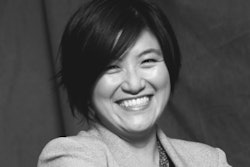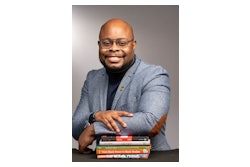The percentage of Black students doubled during the Black Campus Movement to diversify higher education in the late 1960s and early 1970s. Since 1976, the Black enrollment has more than doubled once again, from 943,000 to 2,269,000 in 2008. The Black share of the overall enrollment in American higher education increased from about 5 percent in 1965 to 10 percent in 1976 to 14 percent in 2008.
Without question, more Black and Latino students are in college in 2012 than 40 years ago. In terms of the total pie, non-Whites have a larger piece than ever before. They are walking into historically White colleges and universities (HWCUs) in unprecedented numbers.
This is progress.
This fits nicely into the positive ending of a story of racial progress that Americans like to tell. This is a pleasant speaking point for the engineers of the current affirmative action policies when scolded for not doing enough.
We should be pleased with today’s bird’s eye view of the racial makeup of our student body, specifically when we can imagine the lack of color birds saw forty years ago. Based on their share of high school graduates (14.5 in 2004) and the American population (12.8 in 2008), the total enrollment figure of 14 percent seems to tell us that Blacks are well represented in the student body of higher education.
However, upon a closer look the disparities, the overrepresentations, the under-representations begin to surface in clear and present view. We are forced to crumple up and throw away the happy ending of the progress story. As we get closer to the surface — to the complexities, to the distressing realities — we may be compelled to trash the entire story of linear educational progress for our student bodies.
We know that Black and Latino students have generally become overrepresented in the community colleges and for-profit colleges that have rushed into the academy over the last few decades. We know they remain overrepresented in the pool of students who did not go to college, while they have become significantly (and for the first two alarmingly) overrepresented in the high school dropout crew, prisons and the military.
Moreover, according to a recently-released Stanford study, Black and Latino students remain woefully underrepresented at the highly selective colleges. What’s worse, for Black students, the disparities have actually gotten worse over the last thirty years (while they stagnated for Latinos), found the researchers at Stanford University’s Center for Education Policy Analysis (CEPA).
In 1982, the student bodies of the highly selective schools were 5.6 percent Black (and 6 percent Latino), the study found. In 2004, a mere 3.4 percent of students in these institutions were Black (6.9 percent Latino). In 1982, White students were two and half times more likely to enroll in selective colleges. The figure stood at five times more likely in 2004.
This is not progress.
It is a regression, and we should take note in our recent racial history of higher education.
In the second-tier institutions, Black students are even less represented than in the first tier of schools who have the money to recruit the best students. From there, the Black student representation grows until they are significantly over-represented (seemingly between 25 and 30 percent) in the two lowest tiers of four-year institutions, according to a graph supplied by the SEPA researchers.
Even when the CEPA researchers control for income, the disparities persist. “At any income level, two to three times as many White students as Black students [are] enrolled in selective colleges and universities,” they wrote. “This difference is even stronger for students in the top income quintile, where the White enrollment rate is roughly four times the Black rate.”
This data enters the discourse at a time when affirmative action is once again under attack. Not long ago, the U.S. Supreme Court agreed to hear a challenge to the affirmative action program at the University of Texas. The case may be argued in the fall.
The opponents of affirmative action are calling for “race-neutral” admissions policies to achieve diversity, which I previously argued is a grave impossibility. In analyzing the role of Texas Top Ten Percent rule, guaranteeing admission to the UT system for all students who finish in the top ten percent of their graduating class, the CEPA researchers seem to substantiate my previous claim.
The rule “can produce pools of admitted undergraduates that are moderately more racially and socioeconomically diverse than the current population of students enrolled in highly-selective schools,” they surmised. “However, such policies alone are unlikely to increase the proportion of Black and Hispanic students enrolled in highly-selective colleges.” In fact, they cited Jessica S. Howell of CSU Sacramento who found that the Top Ten Percent rules in the absence of race-conscious affirmative action policies would lead to a ten percent reduction in the proportion of Black and Latino students enrolled in highly selective institutions.
In sum, the opponents of affirmative action have significantly cut back affirmative action in the last thirty years, which has probably directly led to the aforementioned growth in the Black-White disparity in enrollments at the highly selective colleges. And now, they want to roll into the academy these race-neutral programs that studies show will further grow the disparities — all in the name of racial progress, justice, and diversity.
With disparities growing and people seeking to rid the academy of policies that held the disparities at bay and replace them with policies that will continue to growth the disparities, this does not seem like progress to me. This story of the last 30 years does not seem like a progressive period to me.
Dr. Ibram H. Rogers is an assistant professor of Africana Studies at University at Albany, SUNY. He is the author of The Black Campus Movement: Black Students and the Racial Reconstitution of Higher Education, 1965-1972.


















